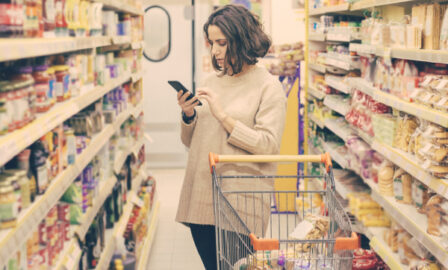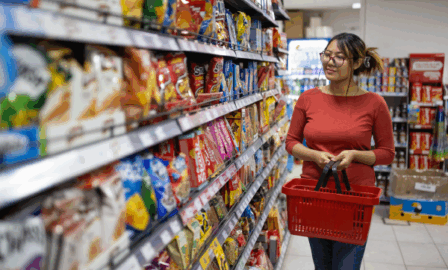Leveraging Serialized QR Codes in Product Packaging
As consumers’ demand for brand transparency becomes increasingly popular, companies are searching for ways to make shopping more informative and safer. In fact, 73% of consumers say they are willing to pay more for a product that offers complete transparency, and 94% of consumers say they are more likely to be loyal to a transparent brand. So how can your business meet these growing expectations? As transparency becomes the new bare minimum, businesses are leveraging serialized QR codes in product packaging to provide information across each touchpoint of the product journey. This type of connected packaging establishes a closer relationship with consumers by allowing them to access tracing, security alerts for potential recalled items, and overall, more information.
With increased knowledge on food serialization and traceability, consumers can feel safe knowing where their food came from, specifically, in the event of an error or recall. This level of brand authenticity and transparency can ease shopper anxiety and provide an overall safer, more informative, shopping experience – even potentially slowing and limiting the accidents that occur from distributed recalled food products.
The History of QR Codes
This idea was launched years ago in 2015, when Hershey’s introduced QR code for consumer packaged goods in efforts to provide consumers with more information on active ingredients used and nutritional facts. A survey conducted reported that 94% of consumers want to get more information about their food from the packaging. However, small products couldn’t fit the information they wanted to include, and even if they could, the writing would be too small and disorganized to be actually useful to consumers. This led to Hersey’s adoption of the GMA SmartLabel Program and QR codes, which enabled consumers to scan the code and receive more information on the product.
However, as many know, the use of QR code was on the downfall prior to the COVID-19 pandemic due to its old-fashioned stigma. Not to worry, the QR code quickly realized the first step in its comeback story shortly following the advent of the pandemic as restaurants and stores transitioned toward online platforms to provide convenient and safe purchasing options. This resurgence of the QR code reintroduced the idea of smart packaging – as consumer demand trends toward increasing transparency and safety, the revival of the QR code couldn’t have come at a better time.
What’s Trending Now?
The QR codes may have dwindled in their first attempt, but they are back and better than ever with packaging first on the bandwagon. For example, Nestlé adopted a scannable QR code on its packaging that, when scanned, leads consumers to information regarding nutritional value, recommendations for healthy meals, and production/manufacturing details. This processing and manufacturing data that they now provide aligns with their mission to show comprehensive farm-to-shelf data to their customers. This smart packaging also gives consumers a much more interactive and transparent shopping experience with digital marketers reporting that QR codes are effective at boosting conversion rates – the study show 34% of participants reporting QR codes as “very” effective at improving conversion rates.
QR codes on product packaging enable brands to explore a new level of transparency that consumers are now expecting. Interestingly, 36% of consumers search for social, health, environmental, and safety information on the product labels of items. Allowing brands to deliver that information effectively through the use of QR codes can establish trustworthy relationships with shoppers.
QR Codes: Product Packaging
The sky’s the limit in what you want your QR code to look like. Makeup brands, food and beverage companies, clothing brands are all optimizing their marketing through smart packaging and QR codes. Consumers expect a safe, transparent, and informed shopping experience. Through leveraging your packaging with interactive QR codes, brands can give consumers that personalized experience while growing a trustworthy relationship with their shoppers.
As your company looks to achieve goals in improving transparency, consider experimenting with smart and active packaging in your sales and marketing strategy.
Subscribe to Clarkston's Insights
Contributions from Leah Harding



